This post may contain paid links. If you make a purchase through links on our site, we may earn a commission.
My Beef Temperature Guide is your one-stop spot for all things beef! From steak temperatures, to burgers, meatballs, and meatloaf, you will find all the most important information here for how to cook beef, plus links to a wealth of detailed guides on every kind of beef dinner you can imagine.
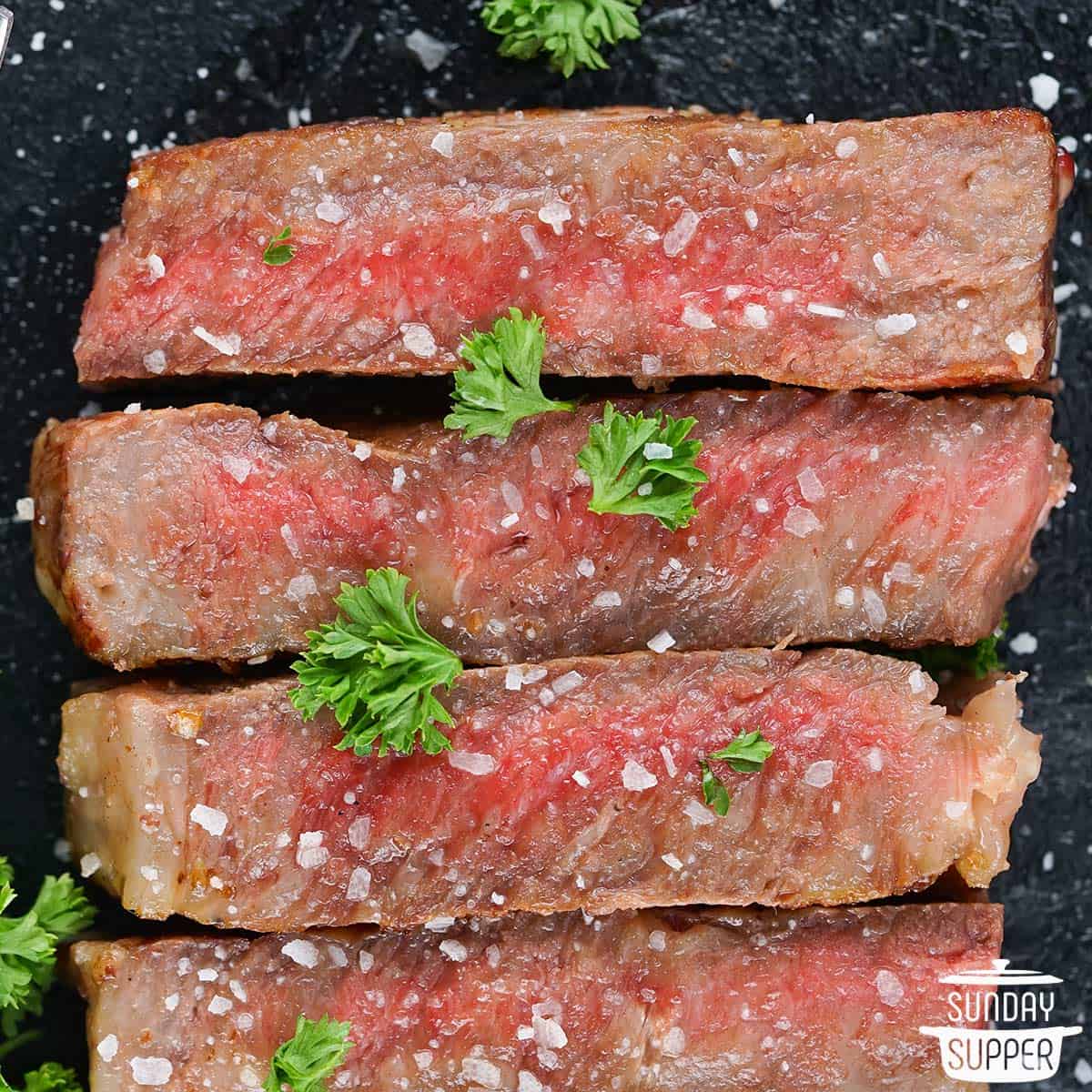
Jump to:
Just like all meats, cooking beef is all about the temperature. After all, a steak can go from rare to well-done in only a matter of minutes- so it’s extra important to know exactly what temperature your beef is at to cook it just how you like it!
More than that, it’s also a matter of food safety. To ensure your family is kept safe from foodborne illness, it’s important to know how to cook beef safely! And it all comes down to food handling and internal temperature.
Remember, the most important tool you have for cooking meat is an instant-read thermometer! With a proper food thermometer, you’ll never have to guess at temperatures again!
Beef Temperature Chart
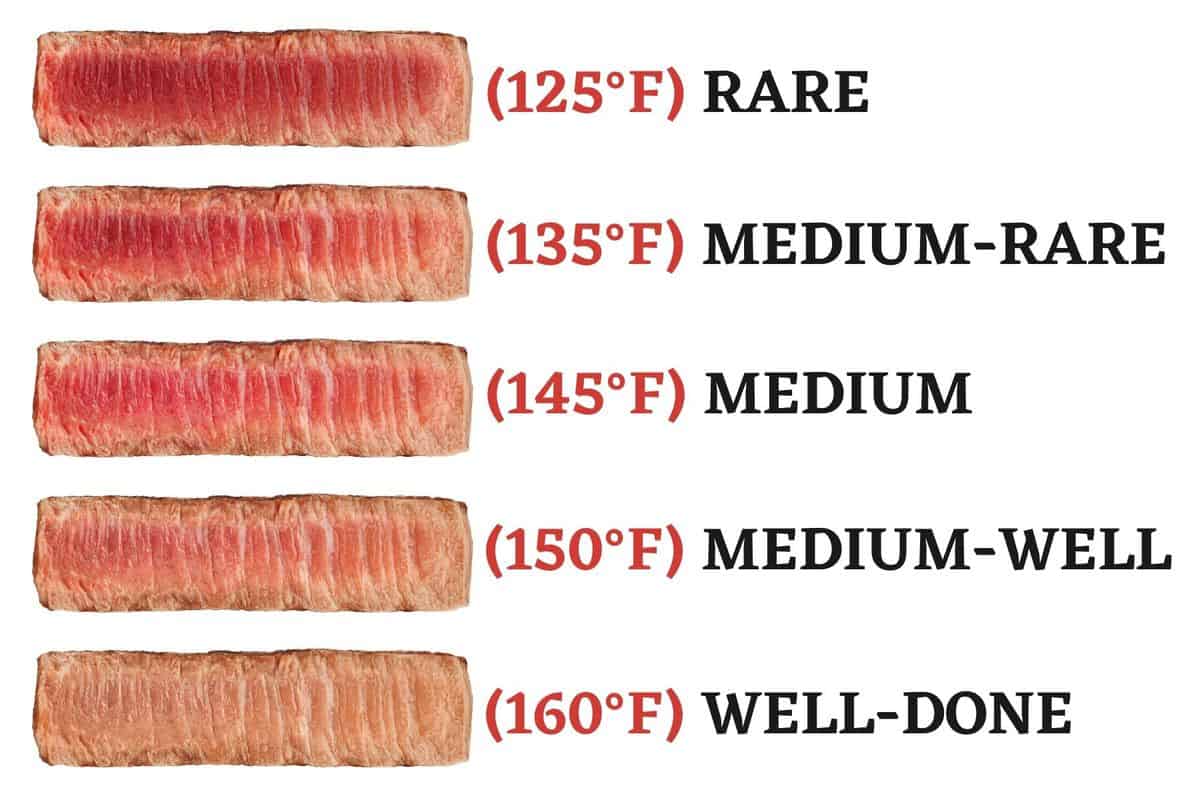
| Doneness | Internal Temperature |
|---|---|
| Rare | 125°F |
| Medium-Rare | 135°F |
| Medium | 145°F |
| Medium-Well | 150°F |
| Well-Done | 160°F |
Prime Rib and Steak Temperature Chart
- As a general guideline, whole cuts of beef like steaks should be cooked to a minimum temperature of 125°F, which is the rare steak temp. Steak is the best kind of beef to cook to lower temperatures! For a full guide on steak temperatures, check out my Steak Temperature Chart!
- This chart is also accurate as a Prime Rib temperature chart! Due to the process of cooking prime rib, it’s recommended to cook it to a temperature 5 degrees below the preferred temp, then let it come up to temperature as it rests. You can check out my guide for How to Cook Prime Rib for more!
Steak Recipes
Prime Rib Recipes
How to Cook a Medium Rare Steak
- Keep a meat thermometer on hand, and check it often by inserting it into the thickest part of the steak.
- Steak doneness can also be estimated by checking the color of the inside of the steak and its firmness, but the only way to get a true reading is with a meat thermometer.
- Remember to take the steak off the grill or other heat source once it’s 5-10 degrees below the target temperature. It will come to the right temperature while resting.
- If your steak has a bone, measure about ½” away from the bone to get an accurate reading.
- There is no single right level of doneness! It’s all up to personal preference, so be sure to check how your guests and loved ones like steak before cooking.
Necessities for Cooking Steak
Ground Beef Temperatures
Burger Temperatures
| Doneness | Temperature | Appearance |
|---|---|---|
| Rare Burgers | 120-125°F | Bright red center |
| Medium-Rare Burgers | 130-135°F | Pink center |
| Medium Burgers | 140-145°F | Light pink center |
| Medium-well Burgers | 150-155°F | Mostly brown, slightly pink center |
| Well-done Burgers | 160-165°F | Brown throughout |
Ground beef on the surface has very similar temperatures and doneness, but on a technical level, it’s a little more complicated. This is because ground meat has a much higher surface area, meaning it’s much more likely to be contaminated by harmful bacteria. Unless you have very fresh ground beef, it’s recommended to cook ground beef dishes to the safe minimum internal temperature of 145°F.
For my detailed guide on burger temperatures, check out my Burger Temperature Chart! And don’t forget my classic Homemade Burger Seasoning!
Meatloaf Temperatures and Meatball Temperatures
When cooking ground beef meals like meatloaf, meatballs, or taco meat, it’s not recommended to leave the meat any less done than medium, or 145°F. Ideally, meatloaf and meatballs should be cooked to 160°F to completely ensure all added mix-ins are fully cooked.
This is especially true if you’re using a blend of meats! If making meatballs with a blend of beef and pork, chicken, or turkey, you absolutely must cook to an internal temperature of 165°F.
Meatloaf and Meatball Recipes
Tip for Checking Beef Temps
Always check internal temperature from the thickest part of the meat! This goes double for ground meat dishes like meatloaf, which tend to cook unevenly. Make sure to insert the thermometer’s probe into several places in the loaf to ensure the entire thing is cooked through.
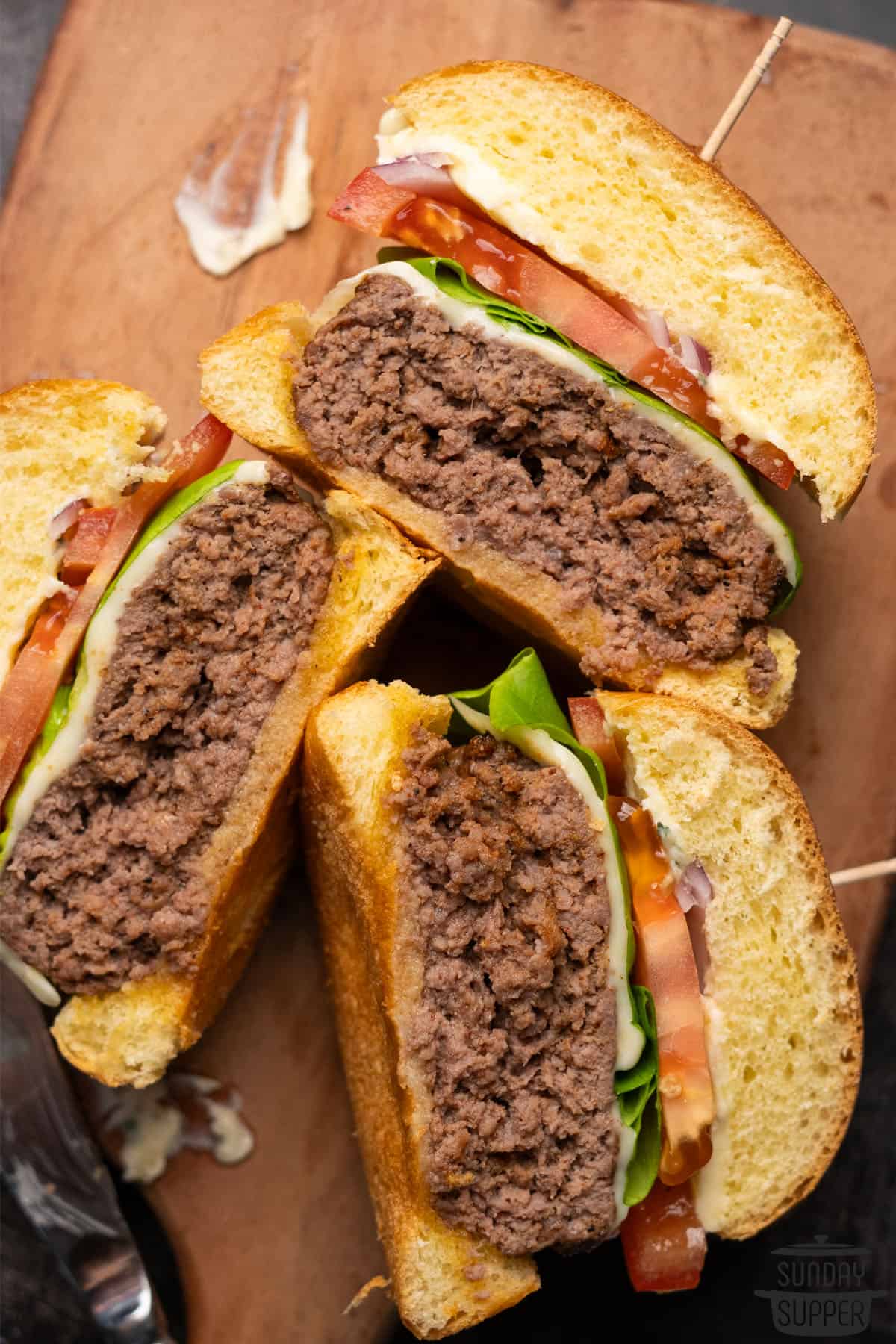
Pot Roast Temperatures
Typically, pot roast is cooked for such a long time that it becomes fall-apart tender, so the internal temp rarely comes into play. This is because most pot roasts are made with tough cuts of meat that require low and slow cooking to reach a desirable, easily shredded texture. Follow standard beef temperature guidelines and be sure to check the internal temperature, but it likely won’t be an issue.
Easy Pot Roast Recipes
- Mississippi Pot Roast
- Instant Pot Pot Roast
- Reader-Favorite Beef Chuck Roast
- Slow Cooker Chuck Roast
Beef Temperature FAQ
The only truly accurate way to check temperature is with a thermometer; otherwise, it’s easy to miss spots that haven’t cooked or are overcooked! However, the most reliable way to check temperature without a thermometer is by slicing the steak open and checking the color of the beef. A bright red inside means you’ve reached the rare steak temperature.
No! The only other meat this guide can apply to is veal, as it is still beef. Any other meat must be cooked to different guidelines, especially poultry. Luckily, I’ve assembled a guide for each kind of common meat below, so you can cook your meals safely and easily!
Meat Temperature Charts
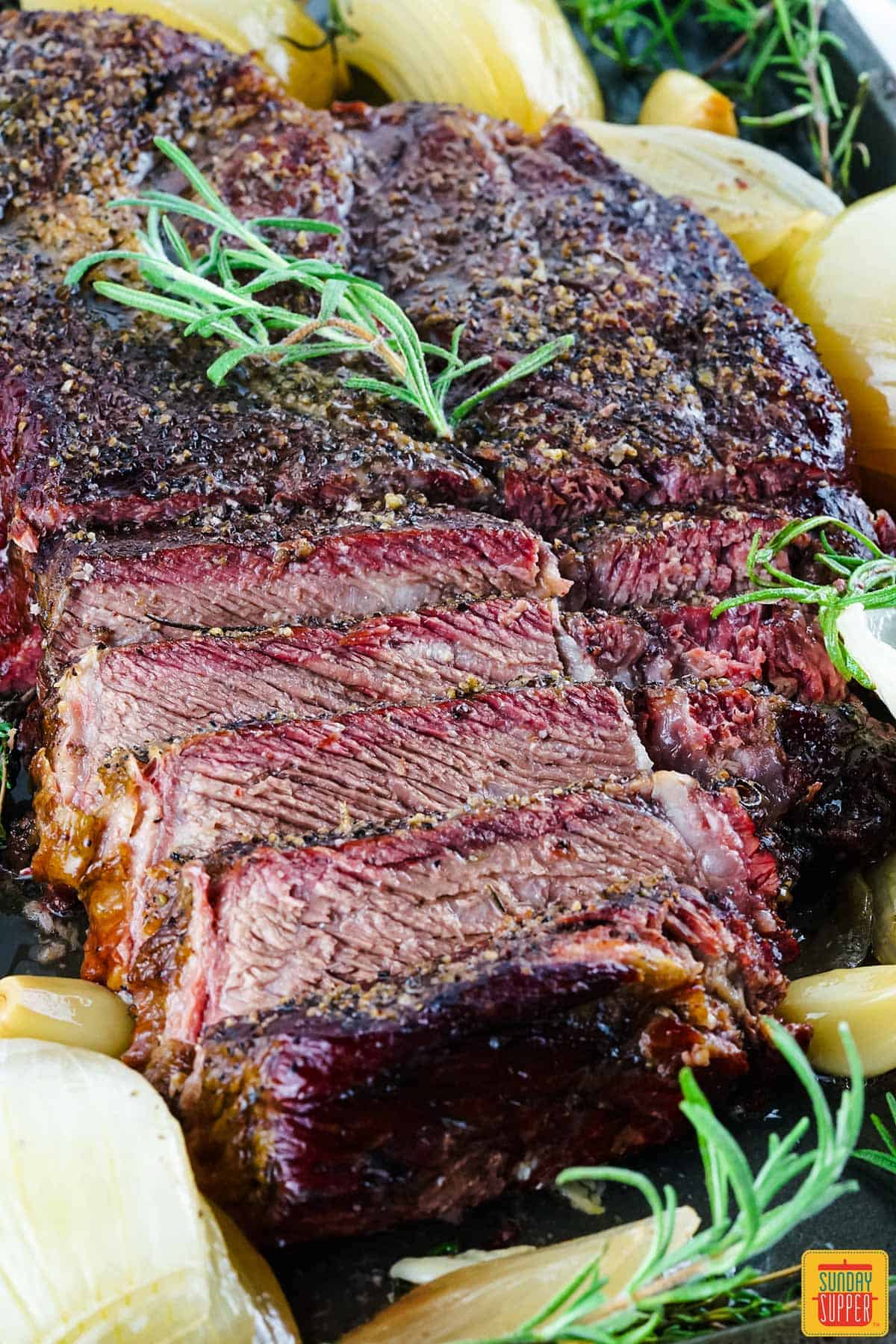
Pin it for later!
Did you enjoy this page? Save it on Pinterest for later!If you enjoyed the recipe, leave a comment and a rating below!


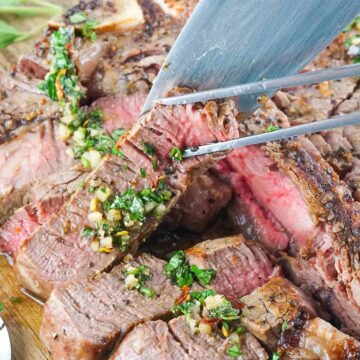
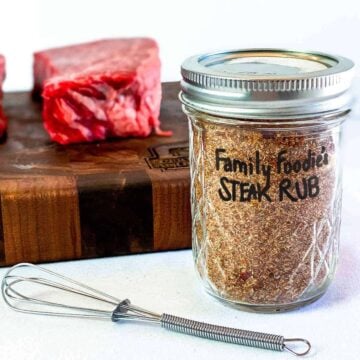
Comments
No Comments